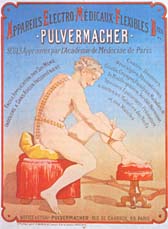 Spinal complaints and diseases are a national epidemic. In Germany, almost three quarters of the population suffer from some kind of spinal affliction. In order to prevent these diseases from becoming chronic, timely treatment is of the essence. Because: the longer spinal complaints persist, the more complicated it becomes to obtain a correct diagnosis and the more complex the clinical picture.
Spinal complaints and diseases are a national epidemic. In Germany, almost three quarters of the population suffer from some kind of spinal affliction. In order to prevent these diseases from becoming chronic, timely treatment is of the essence. Because: the longer spinal complaints persist, the more complicated it becomes to obtain a correct diagnosis and the more complex the clinical picture.
Structure of the Spinal Column
The spinal column is the central element of the skeletal system. Not only does it form the skeletal, or "osseous", i.e. "bony" centre of the body, it also links all the other parts of the skeleton. The head, chest, arms, pelvis and legs are directly or indirectly connected to the spinal column. Likewise, the spine and the spinal cord contained therein, play an important part in controlling and transmitting stimuli from the environment.
The spinal column is subdivided into three different sections. These are - from top to bottom: the cervical spine, the thoracic spine and the lumbar spine. Each of these sections is made up of individual vertebrae - at a total of 24. Each vertebra consists of a compact vertebral body that looks like the segment of a column. The intervertebral discs are located between each of these vertebrae (with the exception of the two upper vertebrae of the cervical spine). The back of the vertebrae with the closed arcs form a canal, stretching from the head down to the small of the back, which is the site of the spinal cord, or marrow, and the nerves exiting into the body.
A lateral view of the human spinal column shows, that the individual sections of the spine vary in shape: the cervical spine curves inward (concave), the thoracic spine curves outward (convex), and the lumbar spine curves back inwards, while the sacrum and the coccyx - as one unit - curve outward again. This evokes the image of a double S-shaped curve. This special shape of the human spinal column serves to minimize and distribute the impacts that naturally occur when walking upright.
Similar subjects on the lexicon
- Intervertebral Disc Operations
- Microscopic Intervertebral Disc Operations
- Endoscopic Intervertebral Disc Operations
- Intervertebral Disc Replacement Therapy
- Autologous Tissue Transplants
- Prosthetics
- Microscopic Nerve Decompression
- Minimal-invasive Fusion
